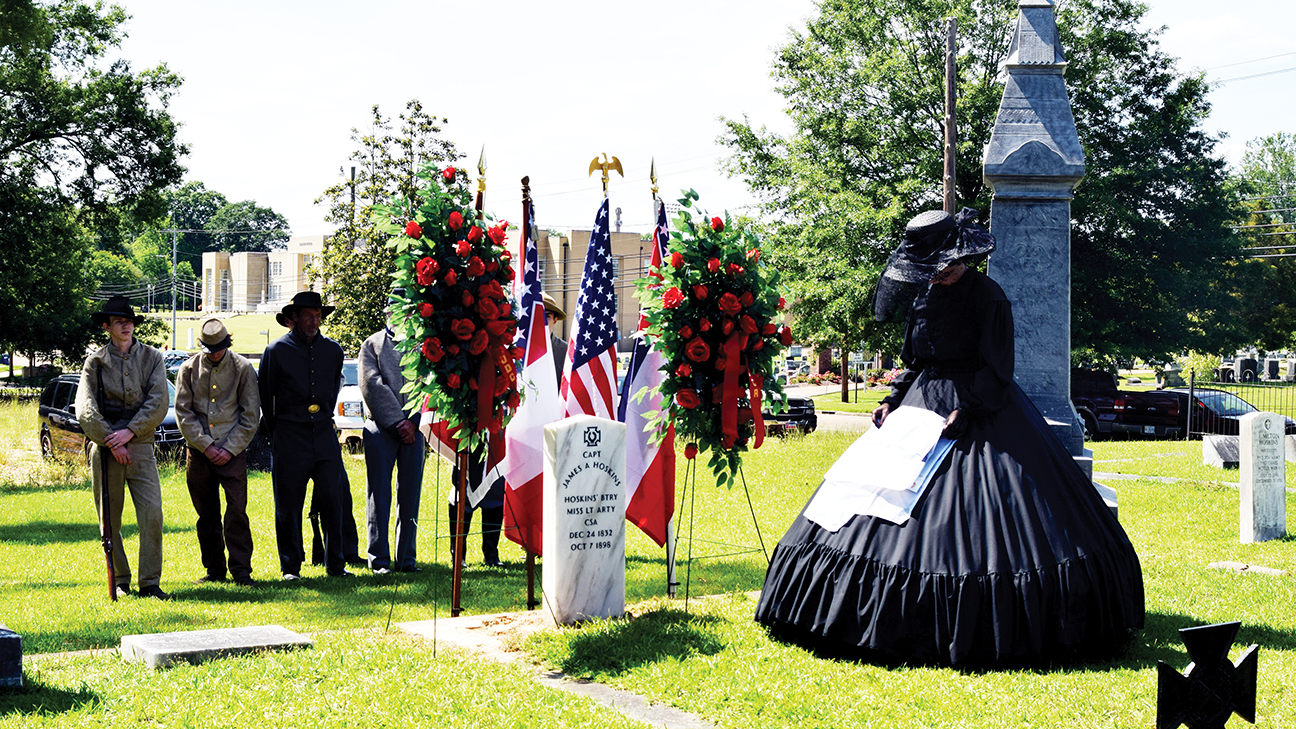CLG helps preserve history for Natchez, Vicksburg
Published 7:00 am Sunday, May 10, 2015
“There are so many that have it now that Brookhaven has almost missed the train.”
Director of the Historic Natchez Foundation Mimi Miller pointed out the irony that the city of Brookhaven has not already hopped the Certified Local Government train and created an ordinance to preserve its historical structures.
To receive the CLG designation with the Mississippi Department of Archives and History that would give Brookhaven a higher priority to receive grants for historic preservation, the city must enact an ordinance establishing a local historic preservation commission, which enforces the preservation ordinance. According to MDAH, the ordinance “includes designation provisions for the identification and registration of historic property and the protection of such property.”
Brookhaven is currently in the process of developing an ordinance to achieve CLG status. A draft is expected to be presented at May 19’s board meeting.
The MDAH participated with the Historic Natchez Foundation to draft the first ordinance that would serve as a model for other communities.
“It’s a good ordinance. It was developed with some of the best people in the country at the time, so each community can take that ordinance and adapt it to them,” Miller said. “The state model ordinance is now 25 years old and has been adopted by numerous communities across the state.”
Vicksburg is another city that has received the CLG designation. It received the designation between 1984 and 1985.
Nancy Bell, the executive director of the Vicksburg Foundation for Historic Preservation, said the designation has proven to be a positive attribute because it allows cities and towns to protect their heritage. She said the designation was not met with much concern in Vicksburg as the city had a local ordinance since 1973.
“It definitely helps with tourism,” Bell said describing one of the benefits of the CLG designation. “It maintains things that make people want to come and see.”
While most attribute specific aesthetic rules and regulations with a preservation ordinance, the state model ordinance itself does not get into those specifics.
“It’s an enabling ordinance, so the ordinance itself does not get into details like how big a tree can be before you have to cut it down or details about building,” Miller said. “It is a generalization. So they’ll have an ordinance and then design guidelines.”
Miller said the preservation ordinance itself is not to tell property owners what they can and cannot do with their building, but rather to protect property values. It also helps to make people aware that if they invest in an older house or building their investment will be protected.
Miller said some towns choose to review paint colors rather than leaving it up to the commission. These approvals generally are given unless it is an extreme color. Miller said there are no approved specific colors, but rather safeguards to prevent ridiculous exteriors.
Miller said communities may have landscape or building design guidelines, which are not ordinances. Design guidelines are developed and enforced by those who serve on the preservation commission.
This is where things get tricky according to Guy Bass, a local business owner in Natchez who recently sought approvals from the preservation commission for renovations. Bass said the commission can be difficult to deal with.
“What is a problem is when you have … someone who doesn’t know anything about structures, and they want to give info on what they think,” he said. “There’s a fine line between enforcement and common sense – and it’s very, very important.”
Bass said a commission that represents each facet of preservation is necessary for a successful process, and that personal feelings or opinions should not creep into commission decisions.
“Maybe they cut your rosebush that hangs over the fence into their property, but you can’t let that sway your opinion when someone is willing to spend $100,000 to renovate this building,” Bass said. “It’s fine to a certain extent, but sometimes it gets to be rather tedious when it comes to who’s right and who’s wrong. You have to have a commission who have enough common sense [on the subjects to make educated decisions.]”
Bass said it has been important that Natchez has gone through the process to maintain the architectural significance of the city, but it is a painful process for a resident starting a business.
“[It can be unpleasant] when you’re spending your money and someone else is telling you how to spend it, but it is what it is,” he said. “If the city wants to have a certain look or project a certain feeling then y’all have to work together to get to that. Our [preservation commission] has saved many, many buildings from being torn down.
“And the commission is a very important part,” he continued, “but the people on the commission have to understand the side of the businesses and residents.”
Bass said through the numerous renovations he has done, he has never butted heads with the commission because he has gone through the proper channels – even though the process in Natchez can be tedious.
“It’s the people that don’t go by the rules and then go ahead and do something [who can run into trouble,]” Bass said. “You have to get permits, then show plans to the commission and preservation society and architectural review board – you have to go through the process. If you do your homework, it’s not as painful.”
Bell said she agrees that everyone on the historical preservation commission must be knowledgeable about the historic preservation guidelines for the process to work.
“You need people who have an interest in historic preservation – people who either have rehabbed a building before or have an interest,” Bell said.
She pointed out the MDAH has workshops throughout the year that commission members attend to keep their knowledge up to date. She also said that those on the commission should be well versed on the guidelines and when given the application for a project within the designated district, members should individually go and look at the property before making a decision.
“They should go to workshops,” Bell said. “You’ve got to know what you’re doing.”
They should then look at the guidelines, see how the request fits with guidelines then grant permission or offer suggestions for things that don’t fit with the guidelines.
“Local historic districts are the reason we’ve protected a lot of our heritage,” Bell said. “It’s the certified local governments that’s protected the nation’s heritage.”





